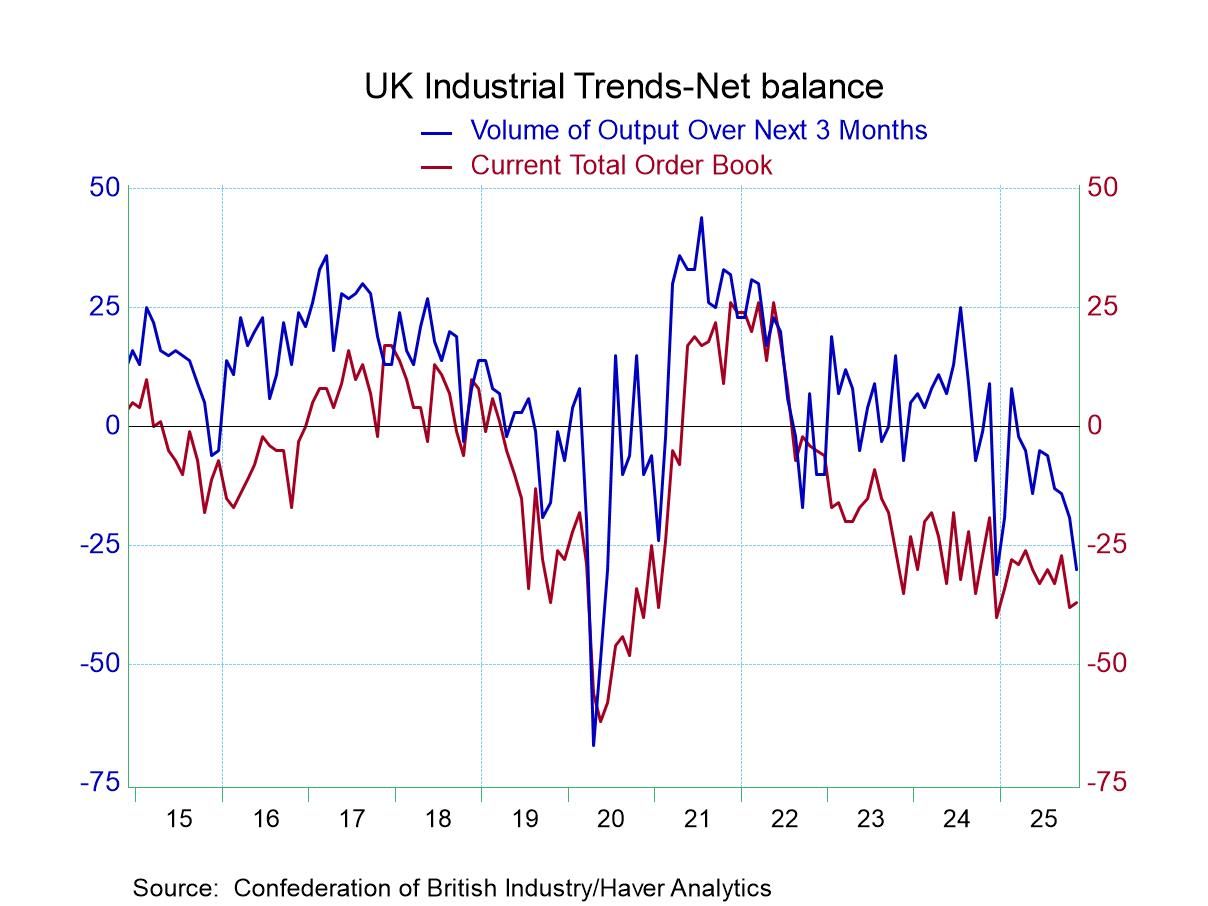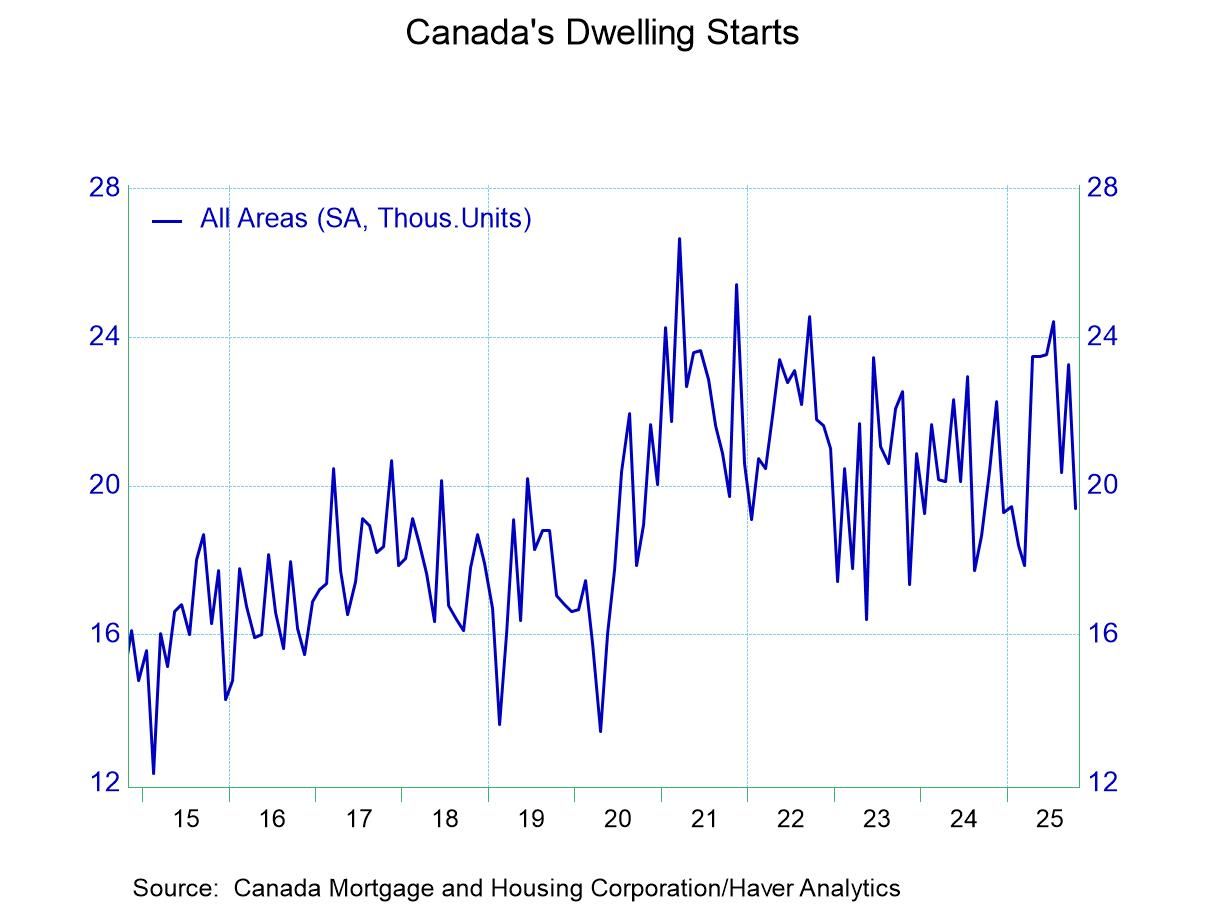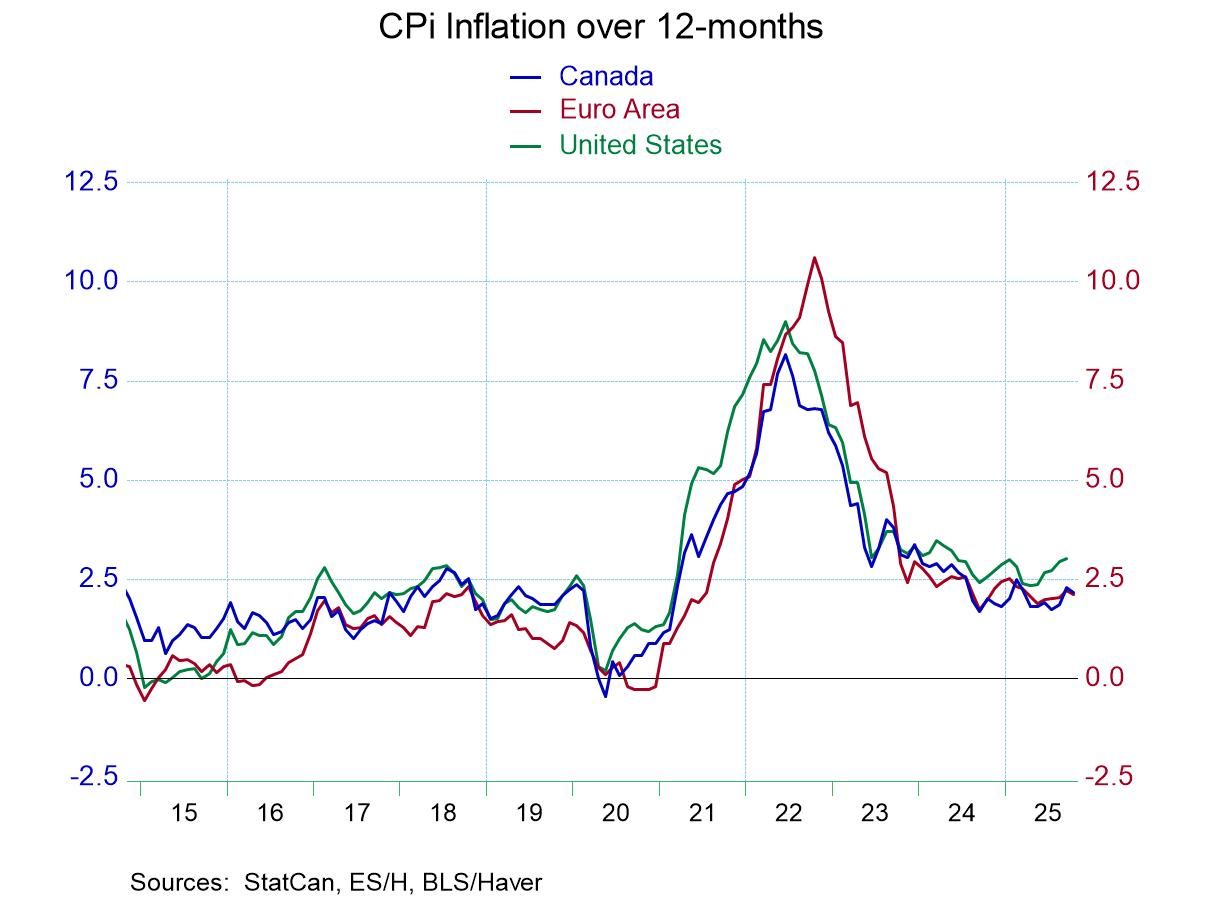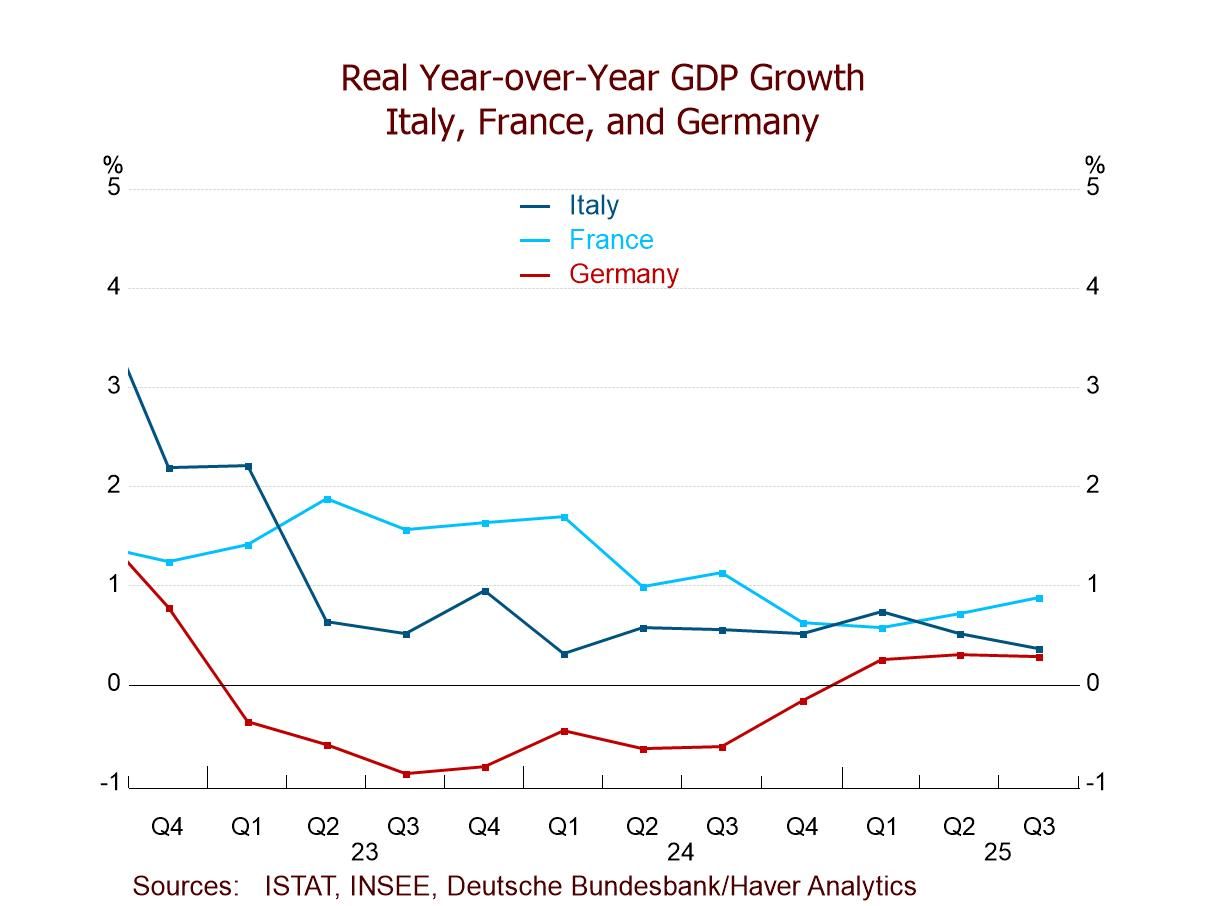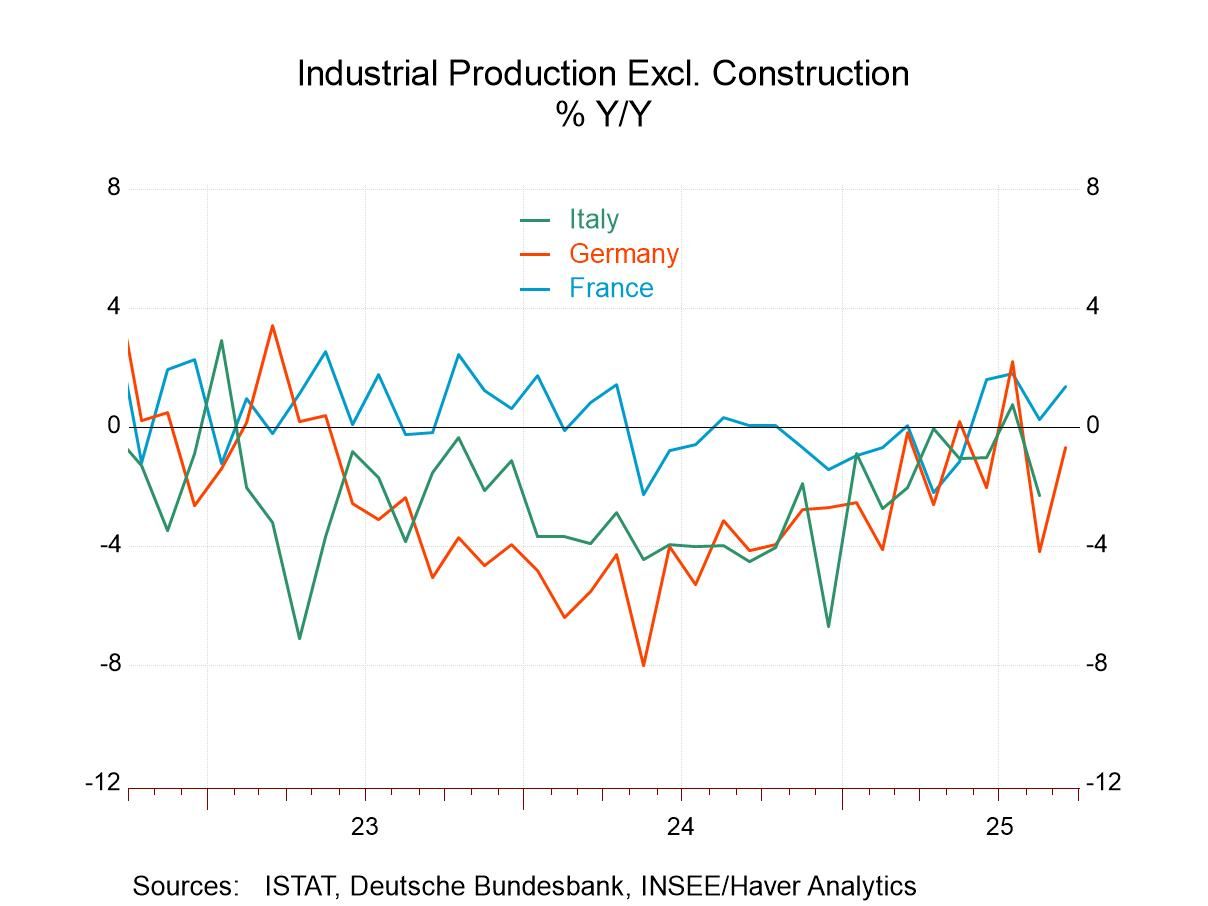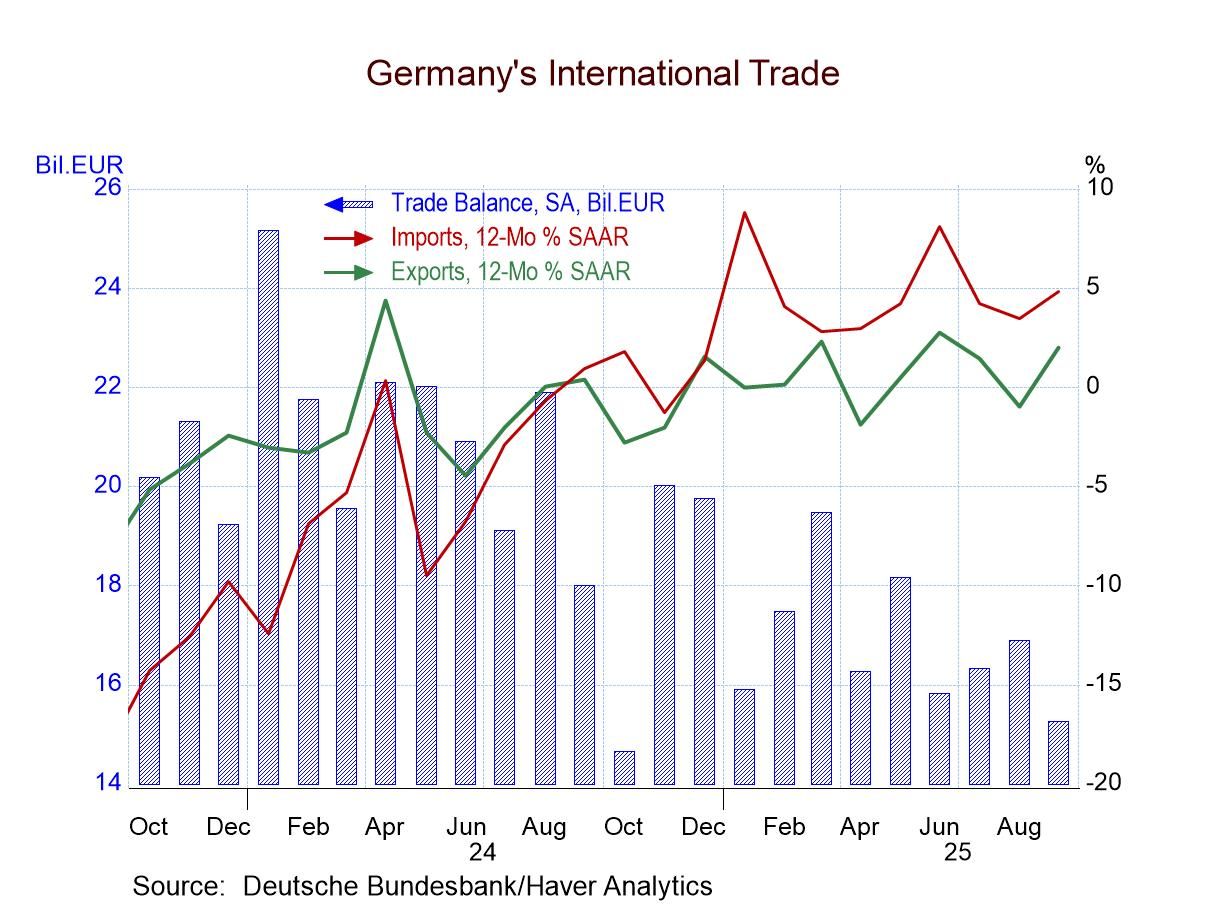Germany’s IFO climate gauge fell in November logging a -16.5 net diffusion score after -14.6 in October. The overall index for climate ranks in its 18.4 percentile on data back to the early 1990s. Among the five key sectors that the table illuminates, only one, construction, has a ranking above 50% which puts it over its median for the period. Manufacturing is at a 13.6 percentile standing, retailing is at a 14.1 percentile standing, services are at a 16.8 percentile standing, and wholesaling is at a 26.9 percentile standing - all of these quite weak.
More on Climate.... On a month-to-month basis, climate eased lower for the headline, manufacturing, construction, and retailing. There were month-to-month improvements in wholesaling, as it improved slightly to -19.4 in November from -20.5 in October and then services where a ‘zero’ reading in October crept up to a 0.5 positive reading in November.
Current Conditions The current conditions metric for the IFO improved slightly to -5 in November from -5.6 in October. Improvements were pretty much across the board in all sectors with the exception of retailing that fell relatively sharply to a -20.9 reading in November from -16.6 in October. Once again, the percentile standings for these five sectors - this time for current conditions - show all of them below their historic median except for construction at a 62.1 percentile standing. The overall current index has a 10.4 percentile standing
Expectations...not so great expectations... Expectations in this report weakened across the board with the headline moving to -10 in November from -8 in October. Manufacturing deteriorated particularly sharply falling to -7.1 in November from -2 in October. All sectors weakened, most of them with more modest month-to-month deterioration. The queue ranked standings for the all-sector reading is at the 21.9 percentile mark. Most of the sectors have a 20 to mid-20 percentile standing; the exceptions are construction with a 30.7 percentile standing and retailing with the very weak 7.9 percentile standing
Summing up The weakening in the IFO index this month was unexpected. While current conditions were broadly getting slightly better, expectations took a significant step back in the month, raising questions about how the German economy is doing and what sorts of readings we're going to see next month afterward given this unexpected turn of events for the worse.



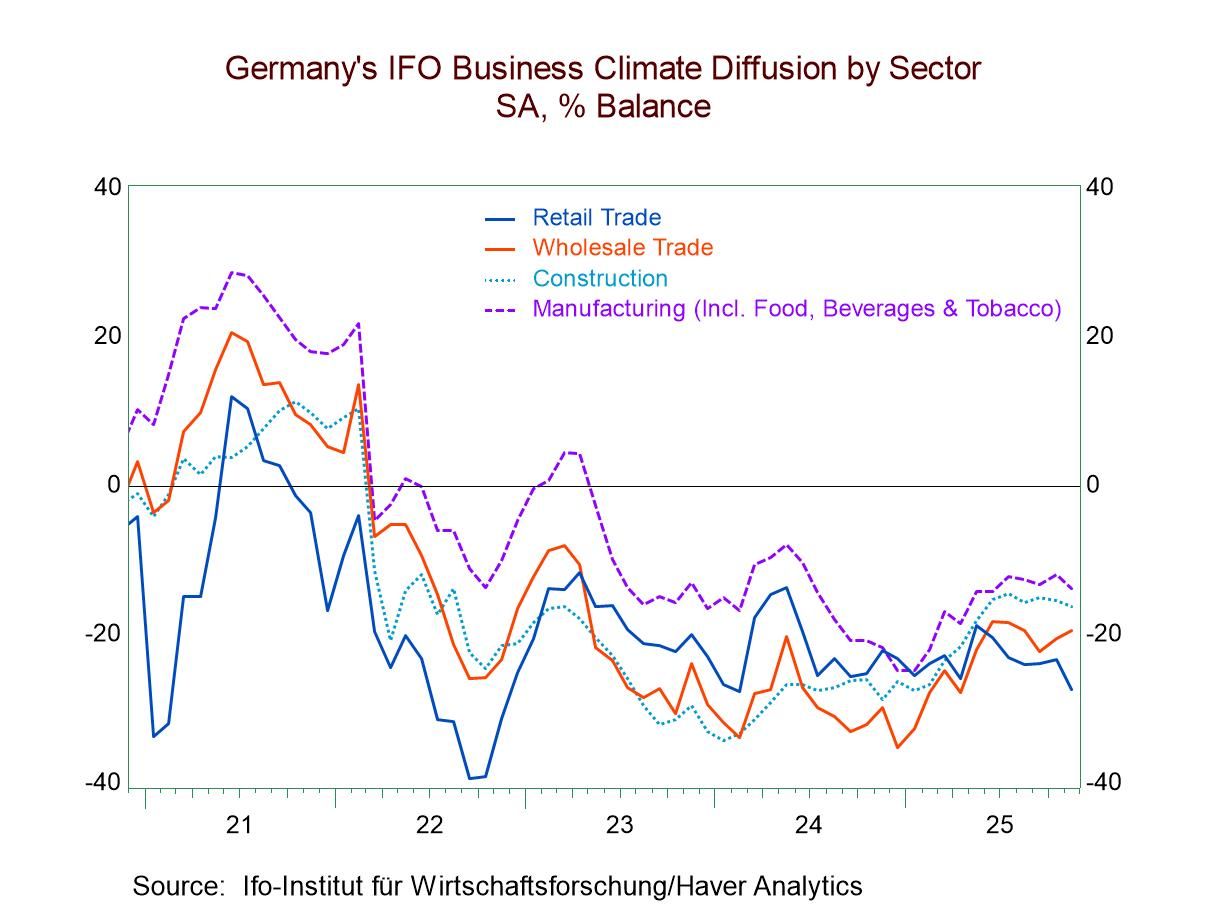
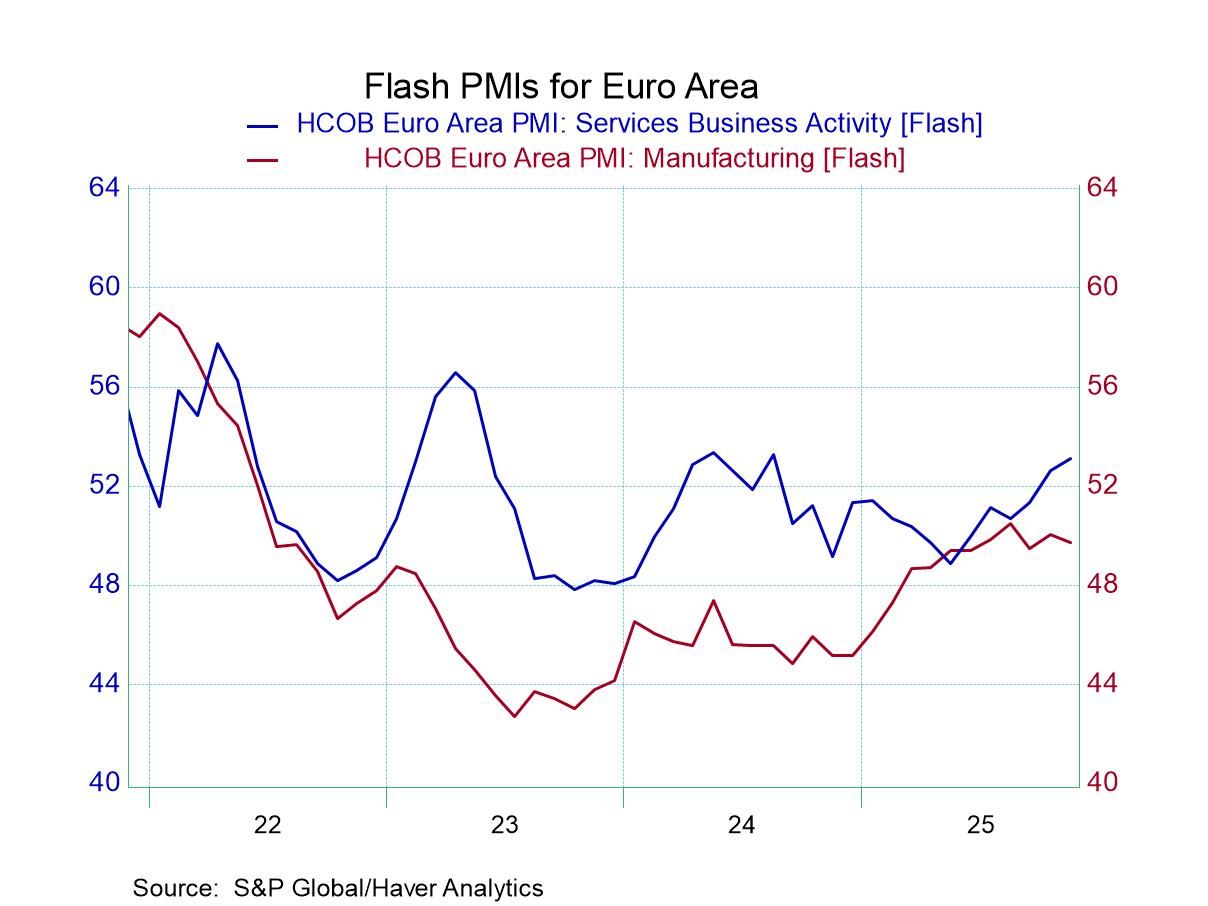
 Global
Global